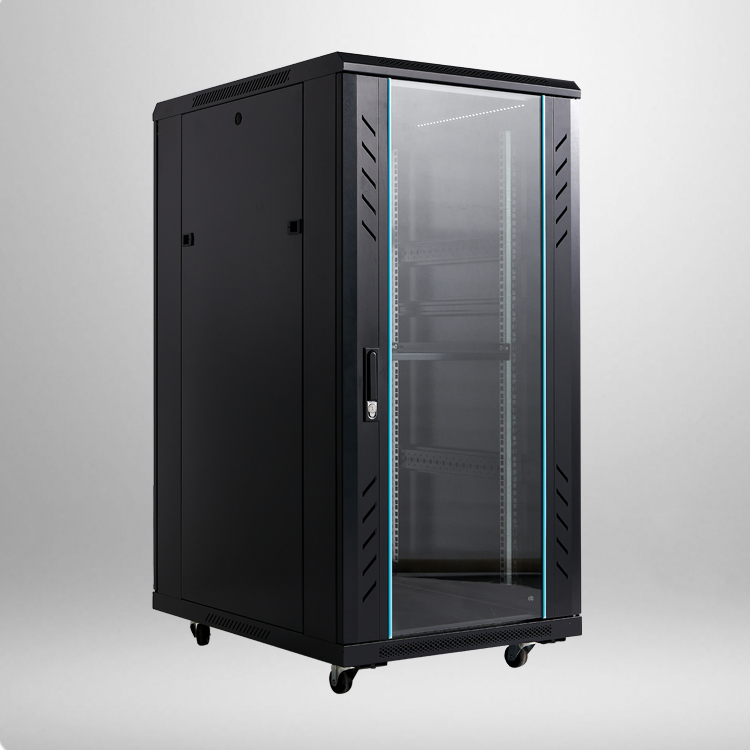
A network cabinet is a rectangular cabinet composed of frames and panels, which can install switches, fiber adapters, fiber distribution frames and other equipment in one cabinet. It has the functions of electromagnetic isolation, noise isolation, ventilation and heat dissipation, shock resistance, corrosion resistance, etc., which can ensure the stable and reliable operation of the equipment, as well as the convenience and safety of installation, maintenance and management.
Finding a suitable network cabinet for your needs depends on several factors, such as:
Size and Capacity: You should measure the dimensions and weight of your equipment and choose a network cabinet that can accommodate them. You should also consider the potential future expansion of your network and leave some extra space for it. Network cabinets are usually measured by their height (in rack units or U), depth, and width. A standard rack unit is 1.75 inches (44.45 mm) high.
Cooling and Ventilation: Overheating can damage your equipment and affect its performance. You should choose a network cabinet that has adequate cooling and ventilation systems, such as fans, air conditioners, perforated doors, etc. You should also arrange your equipment in a way that facilitates efficient airflow and avoid blocking the vents.
Accessibility and Management: You should choose a network cabinet that allows easy access to your equipment for installation, maintenance, and troubleshooting. You should also use standardized and organized wiring methods, such as cable ties, cable managers, patch panels, etc., to keep your cables neat and clear. You should label your equipment and cables for easy identification and documentation.
Security and Protection: You should choose a network cabinet that can protect your equipment from unauthorized access, theft, vandalism, dust, moisture, etc. You should use locks, keys, passwords, alarms, sensors, etc., to secure your network cabinet. You should also place your network cabinet in a safe and suitable location, away from direct sunlight, heat sources, water sources, etc.
By following these guidelines, you can find a suitable network cabinet for your network and ensure its optimal operation and management.


